There are just two double deck elevators in the UK at present, but the tall buildings planned for London over the next decade could give us a total of 50 over the same period. Simon Russett considers the pros and cons of these vertically stacked systems
Back in 1854, when Elisha Graves Otis demonstrated the first safe elevator at the Institute Fair in the Crystal Palace, New York City, he ushered in a new era for buildings. Elevators - along with new construction techniques using steel - paved the way for the construction of classic high rise structures such as the Chrysler Building and the Empire State Building.
But by the 1930s, buildings were becoming taller and more complex. In order to meet the challenge presented by these structures, the Otis Elevator Company pioneered a new type of lift: the double-decker.
Double deck (DD) elevators use the same principle as railways in that they move large numbers of people using common connected carriages with a single drive system. DD elevators consist of two passenger cars, one above the other, connected to one suspension and drive system so that the lower and upper decks serve two adjacent floors at the same time.
Although there has been a steady increase in the demand for DD elevators, it wasn’t until the megastructures of the 1960s and 70s that they came into their own.
Globally, there are around 650 DD elevators in around 50 buildings - which accounts for only 0.01% of the global elevator market. Otis supplies approximately 80% of global sales; other suppliers include Kone, Mitsubishi, Schindler, Hitachi and Toshiba.
DD lifts are relatively common in the USA, Asia and China – but while Europe has over 50% of the world's elevators, it has only 24 DD elevators in six buildings. And while there are approximately 250,000 lifts in UK, there are only two double deck elevators (the first was installed in Tower 42, formerly the NatWest Tower, by The Express Lift Company).
The UK market
However, all this could be about to change. New commercial offices are in demand in London and pressure on space means buildings are getting taller. If the market necessitates buildings of more than 35 storeys then DD elevators may offer a solution to the problem of vertical movement.
In fact, DD elevators have been designed as the primary source of vertical transportation for a number of tall buildings planned for London over the next five to 10 years such as British Land's Broadgate Tower, Gerald Ronson's Heron Tower and Sellar Property's London Bridge Tower. If these projects are constructed, the number of DD elevators in the UK looks set to increase to around 50 units - tripling the number of DD installations in Europe.
The North American model is largely used in buildings of around 100 storeys, with single deck local elevators and DD elevators acting as shuttles to sky lobbies – but it seems unlikely this model will fit the UK (or Europe generally) as few buildings in Europe are this high. In the UK, where buildings are likely to be between 30-60 levels, it is likely DD elevators will be used as the passenger elevators, not as shuttle elevators. In fact, passengers will not necessarily be aware they are travelling in a DD elevator as the experience will not be different.
The real benefit of the DD elevator is that while two sets of people can be transported in the same time as SD elevators, the required shaft area is reduced. The ratio of cars is around 2:3, so 8 SD cars will become five or six DD cars.
The rule of thumb for DD to operate efficiently is a zone of around 15 to 18 levels for each group, though this is wholly dependent on the building layout. Care has to be taken when selecting elevator systems for specific buildings as in some cases the technology may not be appropriate. For DD elevators to work efficiently, it is necessary to have a floor area in excess of 2000 m2 to ensure a balanced demand and a high level of coincidence for people travelling to consecutive levels. This can be calculated using software such as Elevate from Peters Research to determine a figure of merit and the results checked using the Elevator Handbook (Barney 2005) to determine if DD elevators provide an effective solution.
DDs in practice
Elevator passengers select the correct deck to travel to even or odd floors. As soon as an elevator stops to answer a call from an upper floor, car calls to any destination floor are admitted. A well-known approach in serving landing calls is that the landing calls are allocated to the trailing deck, while the leading deck serves the calls that are coincident with the stops of the trailing car - but a more efficient solution is to match the landing call to the best deck.
Modern DD elevators employ sophisticated controls to ensure the best elevator deck is selected to minimise passenger waiting times, journey times and the number of stops each elevator makes. When travelling up, the lower deck answers up hall calls and when travelling down, the lower deck answers down hall calls.
Modern control systems, such as hall call allocation (HCA) solve the problems associated with people deciding their destination when inside the car, as this is entered on a touch screen in the lobby. The destination requests are personalised and then grouped into stacks of floors for vastly improved operational efficiency.
HCA also eradicates the disadvantages for passengers during off-peak periods when one deck may stop for a call with no coincident landing or car call on the other deck.
The majority of DD installations in the UK will use HCA controls, eliminating the need for CCTV cameras and display screens in both cars to view loading conditions.
When comparing DD against SD elevators it is, of course, important to consider their financial implications. It is widely understood that DDs are up to twice the capital cost of SD elevators. And, while fewer DD cars are required to achieve the same performance requirements as SD cars, it is not half as many. DD elevators are therefore a more expensive solution. However, the spatial saving made will be attractive to building owners as increased office space will mean increased revenue over the life of the building.
The annual maintenance costs are lower for DD than a SD solution and the journey times during up-peak will be less than SD, due to the reduced number of stops. This reduction in stops also relates into energy savings.
Modern DD elevators have also addressed standard objections and concerns, as illustrated in the table on page 45, Solutions to common vertical transport problems.
The future
Looking ahead, other developments relating to DD technology include the Thyssen Twin System, which enables two cars to operate independently in a single shaft with separate drive systems. This technology was designed in the 1930s but only became a commercial reality in recent years through developments in control techniques, such as HCA. There are a number of Thyssen Twin installations either under way or planned, such as the Federation Towers in Moscow. At 340 m, this development will be the tallest building in Europe and all but two of the elevators are twin cars.
Otis has developed a system called ‘Super Double Deck’ that allows a maximum extension between the upper and lower cars of up to 2 m. DD cars can then serve floors with varying heights, without requiring both decks to stop. This system is driven by a ball screw and helical gear and a pantograph joint provides smooth precise control with minimum weight and space penalties. Nippon Otis first installed super double-deck elevators in 2004 in the 54-story Mori Tower, a building in Tokyo's Roppongi Hills complex with irregularly spaced floors.
The global threat of terrorism does not appear to have impacted on the demand for tall buildings and our insatiable need to build taller remains intact. It seems likely that DD installations and the technologies developed to improve performance will one day help to achieve Frank Lloyd Wright's mythical ‘mile high’ building.
Downloads
Source
Building Sustainable Design
Postscript
Simon Russett is a principal of Hoare Lea Lift Engineering.
Acknowledgments: Jim Fortune, Fortune Consulting; Gina Barney Associates; Steve Sands, Otis; Peters Research.





















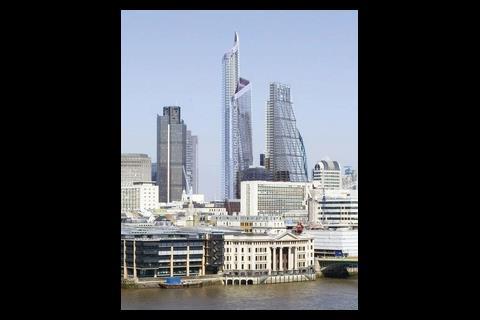
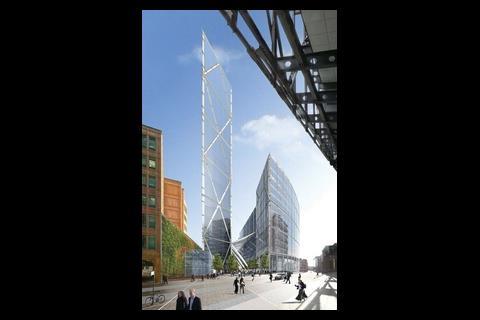
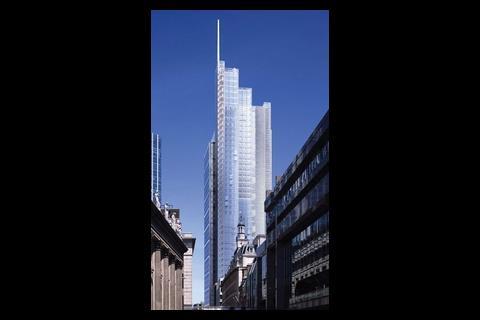
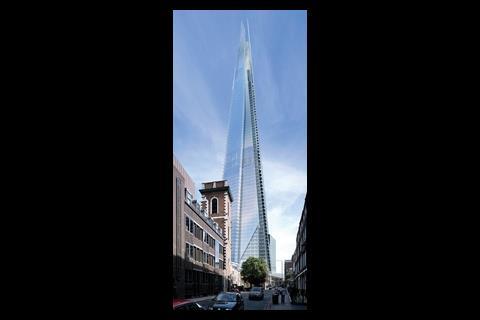
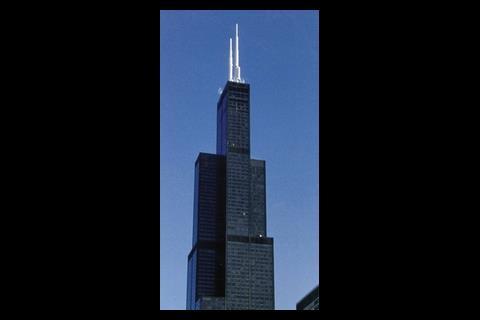
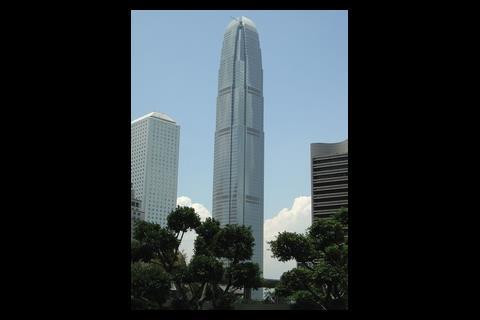
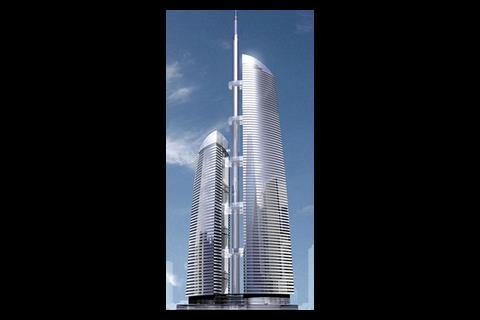

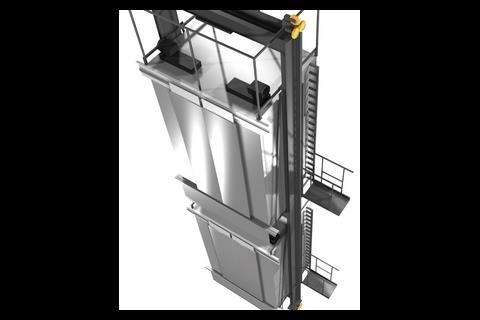

No comments yet